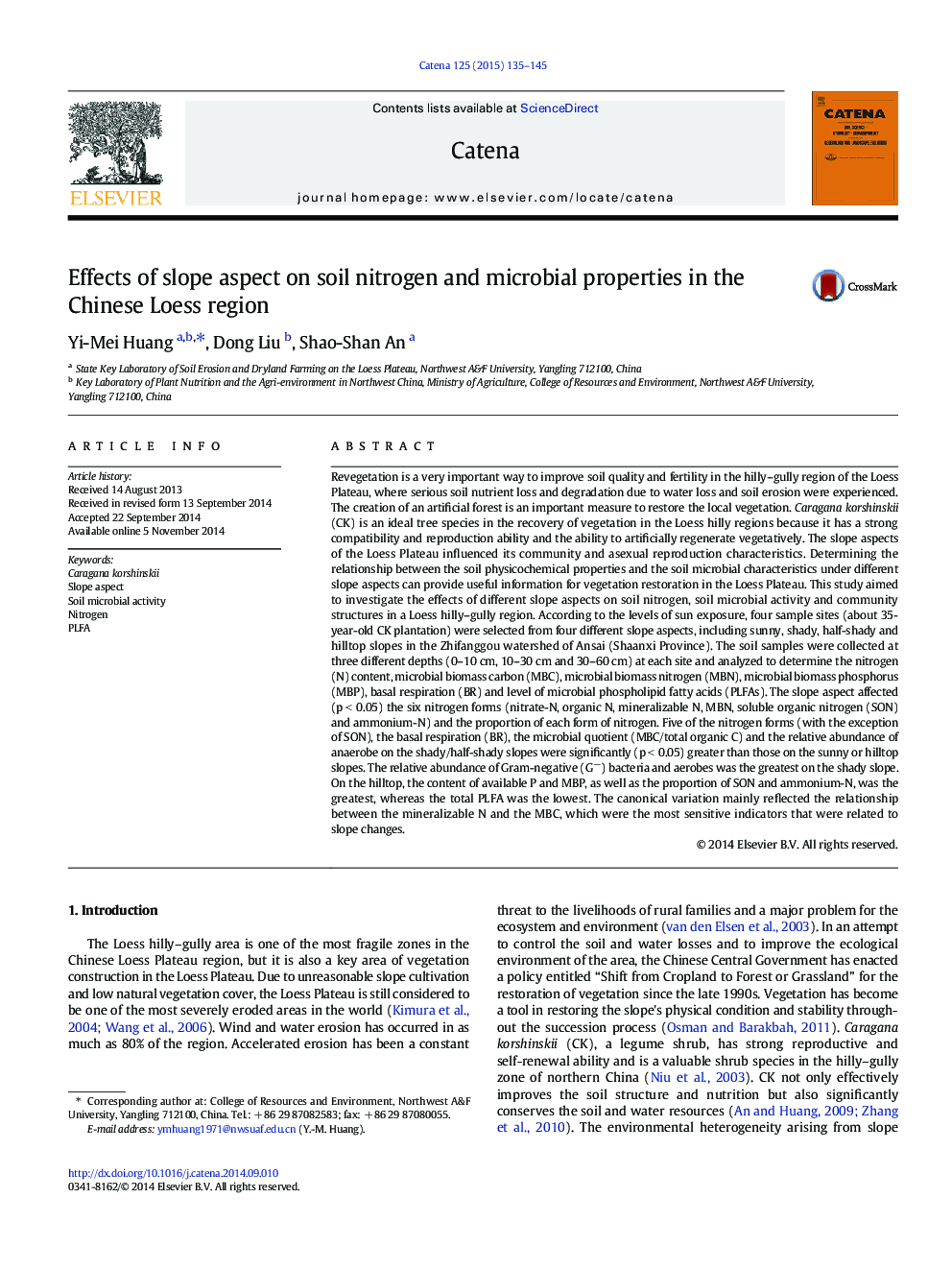| کد مقاله | کد نشریه | سال انتشار | مقاله انگلیسی | نسخه تمام متن |
|---|---|---|---|---|
| 4571286 | 1629227 | 2015 | 11 صفحه PDF | دانلود رایگان |
• Soil nitrogen and microbial in four slope aspects under the same plants were studied.
• Most nitrogen and microbial in the shady and half-shady slopes were higher.
• Available P, MBP, SON and NH4+-N were highest while PLFA was lowest on the hilltop.
• Mineralizable N and MBC were the most sensitive indicators for slope changes.
• G− and fungi were positively correlated with organic N.
Revegetation is a very important way to improve soil quality and fertility in the hilly–gully region of the Loess Plateau, where serious soil nutrient loss and degradation due to water loss and soil erosion were experienced. The creation of an artificial forest is an important measure to restore the local vegetation. Caragana korshinskii (CK) is an ideal tree species in the recovery of vegetation in the Loess hilly regions because it has a strong compatibility and reproduction ability and the ability to artificially regenerate vegetatively. The slope aspects of the Loess Plateau influenced its community and asexual reproduction characteristics. Determining the relationship between the soil physicochemical properties and the soil microbial characteristics under different slope aspects can provide useful information for vegetation restoration in the Loess Plateau. This study aimed to investigate the effects of different slope aspects on soil nitrogen, soil microbial activity and community structures in a Loess hilly–gully region. According to the levels of sun exposure, four sample sites (about 35-year-old CK plantation) were selected from four different slope aspects, including sunny, shady, half-shady and hilltop slopes in the Zhifanggou watershed of Ansai (Shaanxi Province). The soil samples were collected at three different depths (0–10 cm, 10–30 cm and 30–60 cm) at each site and analyzed to determine the nitrogen (N) content, microbial biomass carbon (MBC), microbial biomass nitrogen (MBN), microbial biomass phosphorus (MBP), basal respiration (BR) and level of microbial phospholipid fatty acids (PLFAs). The slope aspect affected (p < 0.05) the six nitrogen forms (nitrate-N, organic N, mineralizable N, MBN, soluble organic nitrogen (SON) and ammonium-N) and the proportion of each form of nitrogen. Five of the nitrogen forms (with the exception of SON), the basal respiration (BR), the microbial quotient (MBC/total organic C) and the relative abundance of anaerobe on the shady/half-shady slopes were significantly (p < 0.05) greater than those on the sunny or hilltop slopes. The relative abundance of Gram-negative (G−) bacteria and aerobes was the greatest on the shady slope. On the hilltop, the content of available P and MBP, as well as the proportion of SON and ammonium-N, was the greatest, whereas the total PLFA was the lowest. The canonical variation mainly reflected the relationship between the mineralizable N and the MBC, which were the most sensitive indicators that were related to slope changes.
Journal: CATENA - Volume 125, February 2015, Pages 135–145
